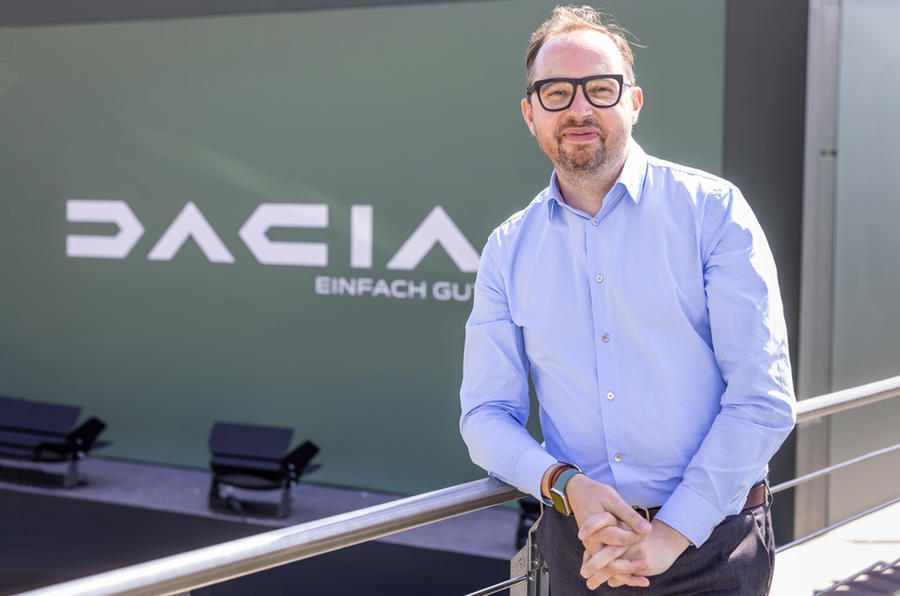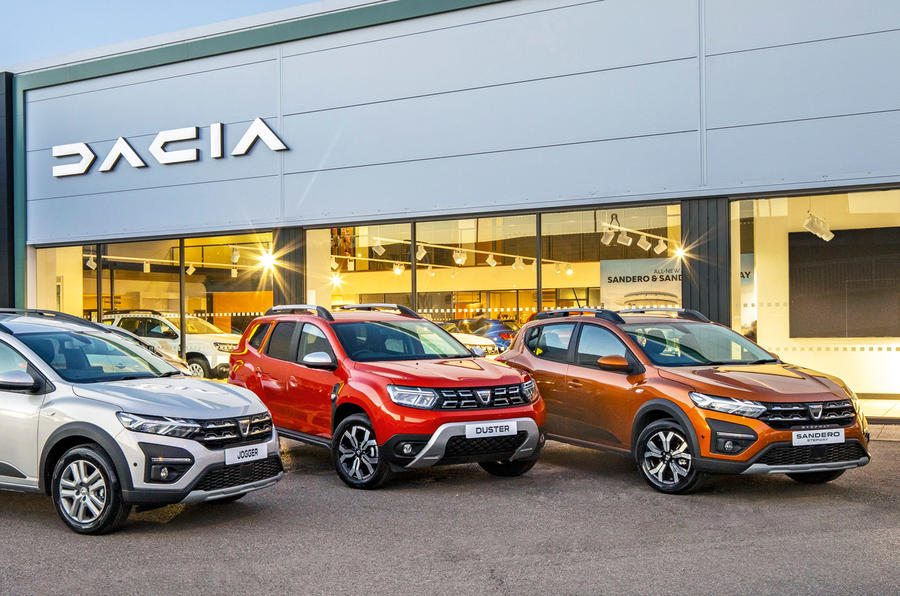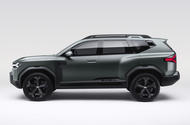Dacia Bigster will be Romanian brand’s biggest model yet
New design boss Miles Nurnberger shares how he will shape Renault’s budget brand
Ex-Aston Martin designer Miles Nurnberger’s arrival at Dacia coincided with the unveiling of the new Dacia Jogger and came shortly after a radical transformation plan for the marque was detailed as part of parent company the Renault Group’s Renaulution strategy.
Speaking on an array of topics, including the brand’s future designs, concept cars, and the car maker’s “wonderful” simplicity, Nurnberger gave Autocar the first clues of what to expect as Dacia embraces its new identity and turns to electrification.
When will we see your influence on Dacia’s cars?
“It’ll be years yet for production cars. The majority of my job is spent worrying about cars coming four years down the line; or even as long as a decade. But I have been able to have some influence on the next big model programs we’ve got coming before that; more about the execution of them rather than conception. Just being able to ‘squeeze the lemon’ on them, really.”
How was the transition from your previous role at Aston Martin?
“Everything’s the same and everything’s different. I feel a bit like an F1 driver who’s moved teams. His job is still basically to turn a steering wheel; and my approach to design hasn’t changed. But the terminologies, and all the interactions I need to have, are so different. Dacia is part of a bigger group, so it makes strategic decisions in a different way than Aston did. I’ve had to understand how the machine works here.
“My first three months were all about understanding the strengths and weaknesses in our design team. I’m happy to say there were more of the former! We’ve got a great foundation, and I’ve been able to strengthen the team, bringing in new heads of Advanced Design and Colour and Materials who both joined us in January.”
Will we see a Miles Nurnburger concept car to start a new era?
“You might do. The brand’s gone through incredible evolution. Luca de Meo’s ‘Renaulution’ plan has now given Dacia its own dedicated design team, which it never had before. Our culture is growing; and I’d say that culture, and the concept you’re talking about, is now mine to be guardian of.
“We have a proper brand mindset now. That will quite naturally lead us to progress, and to make new design statements.”
How is working with Laurens van den Acker and Gilles Vidal?
“It’s great. Laurens lived at the end of my street when we both lived in California and worked for different parts of Ford Motor Company. Gilles was my boss back at PSA fifteen years ago. Their qualities as designers was definitely an attraction for me, and they’re both people I already knew I could work well alongside.”

How do you feel the group’s commitment to design is now compared with decades ago?
“Renault has always been a quiet powerhouse for design, but it feels like there’s a new emphasis on design throughout the group now, on design as a differentiator.
“Luca is definitely a design enthusiast – very literate and perceptive. But there are other key design facilitators throughout the organisation, too, like engineering boss Gilles Le Borgne. When I ask him for great proportions in cars, he will deliver them, because he understands why I’m asking and why the customer wants them.”
Where do you think design ranks as a motivator for a Dacia buyer?
“Right now, price, value and functionality all outrank it. So for us, being pragmatic is very important. But our customers are surprisingly emotional, too. Some of them rank design number one already. But that doesn’t mean we need to start doing design for its own sake. We need to be honest and authentic in what we give; there will be no flamboyance. Clean, friendly, readable designs will always shine, a bit like the sort of cars Land Rover used to make.
“Simplicity is a wonderful theme for us.”
Can you develop Dacia design without moving the brand upmarket?
“Of course. We all naturally associate better design with more expensive products, but actually it’s a phoney equivalence. And in terms of the process, you often get the best ideas when you tighten the purse strings, reduce the component count and complexity, and end up with more elegant, functional solutions.”
How do you feel about retro car design?
“It’s not part of my vocabulary at Dacia. There’s a mood for it elsewhere in the group, and the Renault 5 production car is super nice, but if you’re doing retro, it should be more about recapturing a feeling than making a visual pastiche of something. I have no problem being romantic about old ideas spun in new ways, but it’s not my go-to place. I’d much rather be progressive.”
How do you give a cheap compact car kerbside appeal? Is there a trick to it?
“You need good proportions. That means you don’t need to tart up a design with bad stance or long overhangs. Beyond that, I’d say we express our character, keep things neat and simple, but not go down the Russian-doll route.”
Can you lower Dacia’s entry price in Europe with an A-segment city car?
“They’ve become very difficult to do, but it’s an interesting challenge. We could look at it. There’s definitely still a place for those cars, even though government policy isn’t really for lightweight hatchbacks with efficient engines at the moment. Cars like this are fundamentally important to us. We’re a popular brand, and we have to remain accessible.

Do you feel restricted by Renault Group platform strategy, or enabled by it?
“CMF-B [the Jogger/Sandero platform] is a remarkably flexible thing. I’ve been surprised by what it’s ready to do. It’s our foundation. But I’m also finding that we can lead new platform development now; we’re an equal partner when it comes to new technologies.”
You’re trading a lot on rugged design at the moment. Is that trend going to continue?
“There are many ways to do rugged. It fits the brand well. It’ll work on EVs too. And you can make robust-looking cars that are also dynamic-looking, so we can have bandwidth within our model range. The spirit of adventure is what matters.”
Source: Autocar
